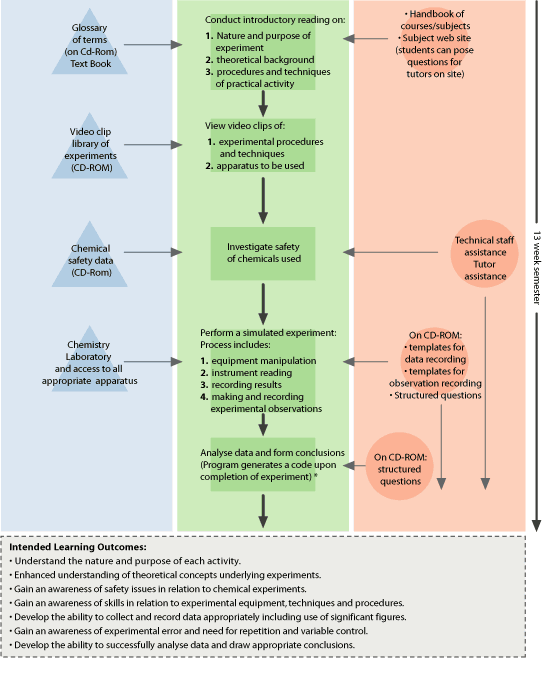|
ACCESSIBLE RESOURCES
There are two main resources provided to students in this
learning design: an interactive multimedia program on CD-ROM
and the physical chemistry laboratory. The first resource
has been designed to enable students to more effective utilise
the second resource.
The interactive multimedia program provides access to the
glossary of terms, the library of video clips of techniques,
the experimental safety data for chemicals used, the templates
for data recording and for observations is provided via a
library of books made accessible to students by clicking on
the required volume. Any term or chemical encountered in the
theory which is not known to the student may be investigated
at any time by referring to these resources on the CD-ROM.
RESOURCES IN CONTEXT
Students have access to information on the correct use of
equipment and techniques as they prepare for their practical
classes. They are able to carry out the procedures as many
times as they wish in a completely safe and non-threatening
environment before carrying them out in real time. They will
be familiar with the nature and purpose of the experiment
and even have carried out related simulated data collection
and analysis. Thus they should arrive at each laboratory class
confident in their ability to carry out the procedures efficiently,
effectively and meaningfully.
VARYING THE RESOURCE SET
All resources are provided on the CD-ROM and are thus available
as required by students.
|

